A bag, a bike, a radio and a lock – all essential gear for a city bike messenger. Your job is virtually impossible without all of them. All of them are relied on to be unobtrusive and reliable, but to work faultlessly when called upon.
Messengers are hard on gear too. Riding 50 miles or more a day and locking and unlocking bikes up to 40 times a day, you soon get to know what works and what doesn’t – plus what takes time and faff and what the quickest way to do anything is. Time, literally, is money in this game.
Top marks then to Kryptonite for getting panels of bike messengers in to help it decide how to shape the next generation of bike locks. It turns out that the security of the locks wasn’t an issue, but the messengers needed shorter times between rolling up to a signpost and walking away from a locked bike; they also wanted better security of accessories and wheels.
So here are the first samples from Kryptonite’s messenger collection:
The Messenger Mini and Messenger Mini+ have been improved so that it’s lighter than the Evo Mini, yet as strong, plus the key mechanism has been improved to stop you snapping a half-inserted key off by mistake when you’re in a hurry. The ‘plus’ bit of it is a C-shaped add-on that slides over the shackle to secure a front or rear wheel when you’re going to be more than a minute.
The Chain and Moly lock was popular with messengers for several reasons. The chain lock can be carried around the waist and the previous incarnation of the lock allowed it to be carried with the padlock open and the key in place for quick deployment. With the advice of the messengers, Kryptonite has brought this feature back.
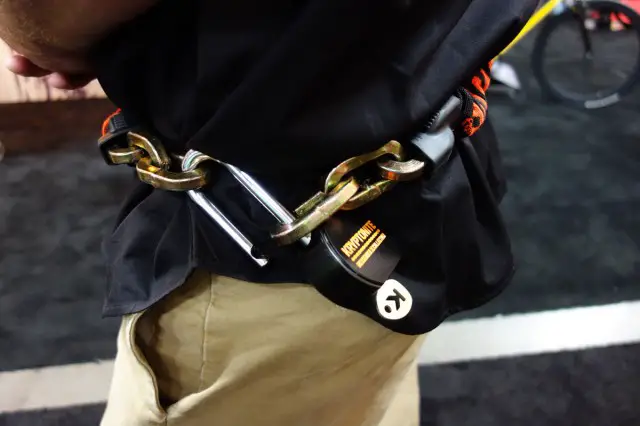
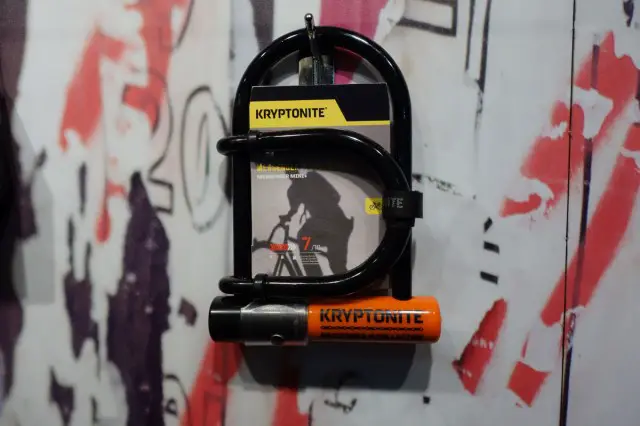
Locking wheel nuts – this wins our ‘That’s simple, yet clever’ award. These locking wheelnuts are intended to secure your front wheel (ignore the fact they’re on a rear wheel in the pics, though they work there too) and they’ll do up with a regular 15mm spanner, then just loosen them 1/8th of a turn and they’re ready to lock. A pin drops via gravity to prevent the nuts being undone. All you need to do it turn your bike upsidedown and the nuts will turn again, but in theory, if you’re bike is locked up at the rear, a thief can’t upend your bike. Simple, but clever, see?

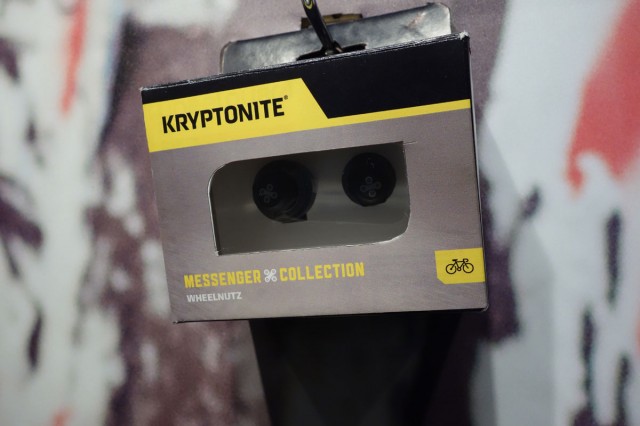
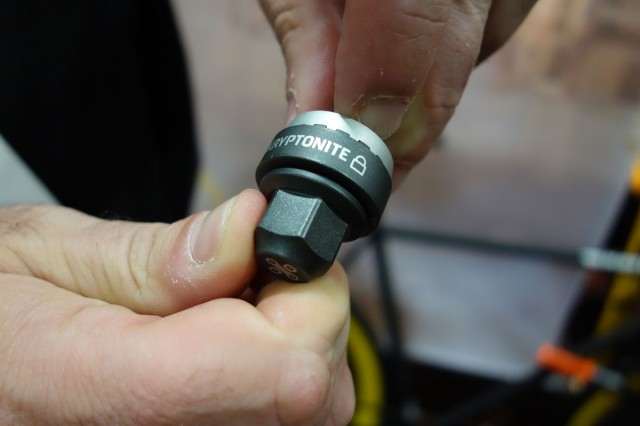
Meanwhile, the rest of the range has had a bit of a makeover and gained some bold new colours (to make bike locking fun and stylish, we hope…)

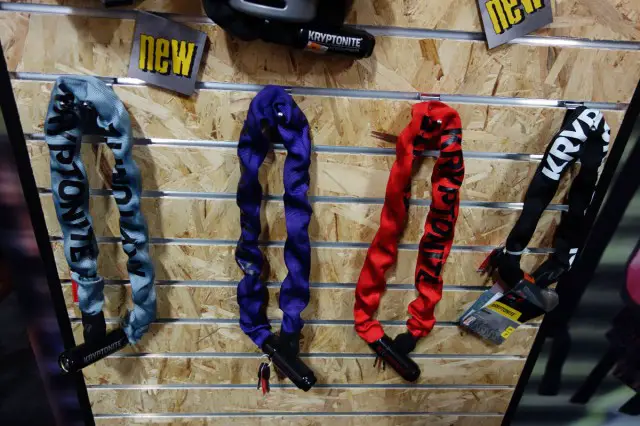
Comments (6)
Leave Reply
Post Comment

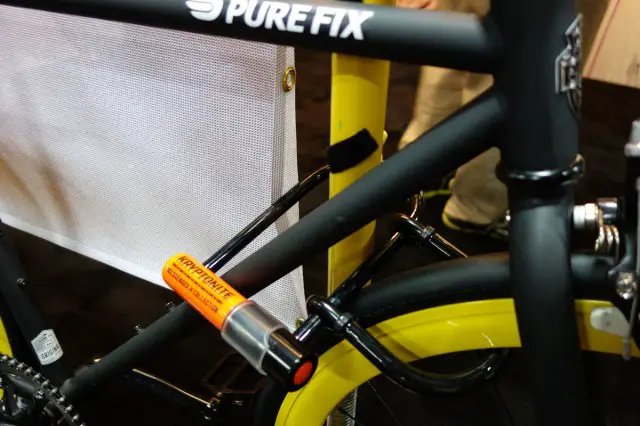

I like the idea of the locking nuts, no special key to carry it use. My concern would be will it continue to unlock after a grotty winter.
Normally I glaze over when weights of bike parts are discussed but when it comes to locks, it would be good to know….
That additional C lock available as a separate part?
Well they all look the biz!
I like the idea of those wheel nuts, but I am nervous about them. I had a pair of skewers that worked on the same principle – i.e. they’d only open when the bike was inverted. It seemed like a good idea, until the cam in the rear one failed and my back wheel fell out.
One of the first things I do to my bikes is replace the 9mm QR skewers with Halo Hex Key skewers for a bit of extra security with no special tools.
Those nuts look like a nice solid-axle equivalent – is there a way to remove the wheel when/if the pin seizes?